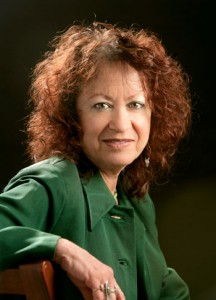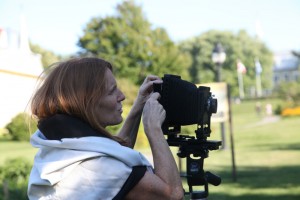 Being both a writer and an artist, I often get the question of how can you switch from one medium to the other? To be honest, I don’t consider that I’m switching. It’s all in your head (or mine, I suppose). There are so many elements that cross over from one medium to the other—metaphor, imagery, form, symbolism, etc. that I don’t think I need to belabor that point. And of course there are very narrative artists such as Magritte or Joseph Cornell. And there are many other artists who are also writers or actors or musicians (William Blake, Terry Allen, Tony Bennett, Patti Smith, to name a motley few). And when I lived in New York, it seemed that everyone was writing a screen play, sculpting and playing in a band or photographing, juggling and tap dancing or putting together dance, jazz, projected painting performances or some variation of any of the above. Doesn’t all creativity spring from the same source?
Being both a writer and an artist, I often get the question of how can you switch from one medium to the other? To be honest, I don’t consider that I’m switching. It’s all in your head (or mine, I suppose). There are so many elements that cross over from one medium to the other—metaphor, imagery, form, symbolism, etc. that I don’t think I need to belabor that point. And of course there are very narrative artists such as Magritte or Joseph Cornell. And there are many other artists who are also writers or actors or musicians (William Blake, Terry Allen, Tony Bennett, Patti Smith, to name a motley few). And when I lived in New York, it seemed that everyone was writing a screen play, sculpting and playing in a band or photographing, juggling and tap dancing or putting together dance, jazz, projected painting performances or some variation of any of the above. Doesn’t all creativity spring from the same source?
I suspect that I’m sounding a bit defensive, and I guess I am. I’ve sometimes felt the need to justify being a photographer who prints and hand colors her photos, a painter who works in almost every medium (I started to say except printmaking, and then I remembered that I did those mono-prints once) and a writer of both fiction and poetry. “When do you sleep?” I have translated in my own head into “What kind of freak are you?” or “Maybe you should just do one thing…” (“really well”, my ego defense system adds). And then there’s the “prolific” problem—the most commonly used adjective bounced around my studio by new visitors. I have grown to dislike the word, which I associate with weeds. And I hear myself sounding defensive when I answer that the studio contains years of shows with, yes, unsold works still lurking about, and let’s say you put up a show of thirty pieces and you sell two, and you have at least one show a year, well…you do the math. And of course there’s other work that you do that doesn’t go into a show. Other times I just say, “Yes, I’m productive” (a “p” word I can live with).
But I started out to write about the crossover, which I actually wasn’t that aware of until I had to do a presentation for the writing class of a colleague. I got together slides and poems and suddenly realized almost all of my poems and art pieces had some element that reverberated from one medium to the other. For example, I found paintings and photos with eggs and then discovered any number of poems also hatching eggs right and left. Which came first the painting or the egg, or the poem?
One of my most fun and challenging experiences involved a collaboration with a sound artist titled “Out of the Darkness”, inspired by Roethke’s poem of the same name, projecting double exposed slides of scraps of my paintings and other abstract images with a one to twenty second dissolve, triggered by a tape of new music composed on a (at the time) very sophisticated synthesizer. Part of the fun was setting small plastic figures on fire and photographing them and going on excursions to record the traffic or the wind. The final effect was very much like a film, with images overlapping and dissolving into each other at different speeds.
Maybe I should have gone into film, which combines all the elements: imagery, narrative, sound, metaphor, color. Instead, I’m on the board of Filmworks a local group that brings alternative, independent and foreign films to Fresno. Last year, as a fundraiser for our organization I dreamed up the idea of combining jazz (another love) and poetry and invited a local jazz saxophone artist, Ben Boone as part of a quartet to collaborate with Phil Levine and Peter Everwine. I called it THE JAZZ OF POETRY, THE POETRY OF JAZZ. Herding all the people and elements involved together was harder than herding cats, (even cool ones) but it all evolved as probably the best jazz or poetry does in a very casual, spontaneous, and improvisational way and was a huge success. In fact, Ben and Phil have gone on to other jazz/poetry collaborations.
I confess that sometimes when I’m dry in one medium, I just turn to another which maybe says more about my own obsessive/compulsive tendencies than I’d like. But I do think that dipping into another medium can really open up all kinds of possibilities for your primary medium. If you’re a poet, take up piano or painting or puppetry, not necessarily to start a new career, but to stir up the creative waters. Nothing is more exciting or scary or (scary exciting) than the new blank document. When will you find time to do all this? When will you sleep? I don’t know, but when you do, you might have some wild and crazy dreams.
